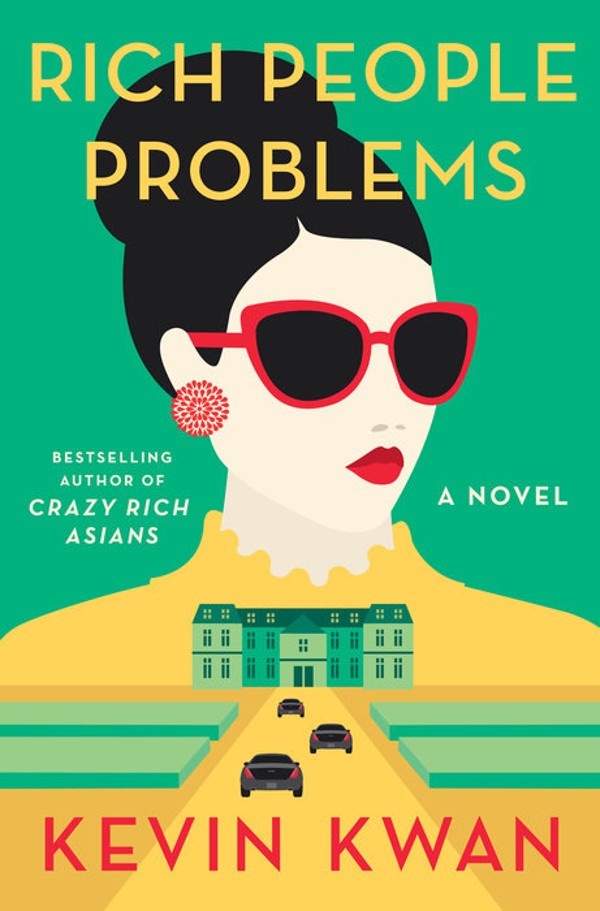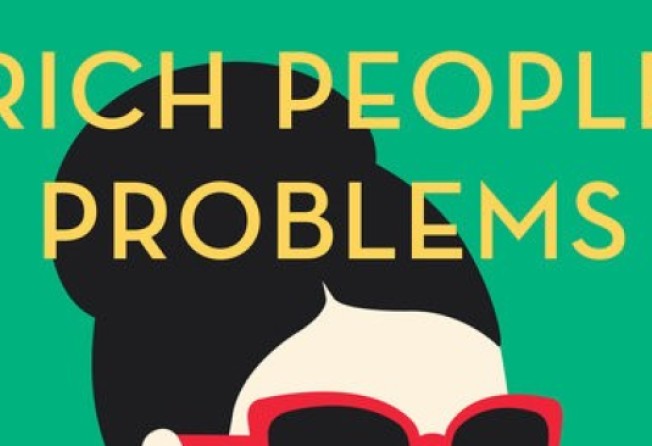
by Kevin Kwan
Doubleday
Kwan shows again that he can marshal a large cast of memorably egregious characters, and can conjure fashion and interior design on the page, although he spends a little too long getting things started this time


After the success of Kevin Kwan’s first two novels, Crazy Rich Asians (2013) and China Rich Girlfriend (2015), expectations for the third in the trilogy, Rich People Problems, couldn’t be higher.
Here, money, race, family and social background clash like an Asian version of The Forsyte Saga, but with greater levity and a lot more shopping as Kwan continues his tales of the lives of Asia’s ultra-rich by reuniting us with series favourites. They include matriarch Shang Su Yi; avaricious social climber Kitty (now the wife of billionaire Jack Bing, China’s second richest man); Jack’s daughter, Colette, whose marriage to a British peer spurs Kitty to ever-greater absurdities; and the preposterous Eddie Cheng.
Before revving up the plot engine, Kwan spends a good deal of time reintroducing the large cast of characters, with their petty jealousies, sibling rivalries and mind-boggling expenditure.

Fascinating for the outsider is a careful delineation of the East Asian racial hierarchy, to wit, in descending order: “Chindo, Singaporean, Hong Konger, Malaysian Chinese, Eurasian, Asian American living in New York or Los Angeles, Asian American working in private equity in Connecticut, Canadian Asian from Vancouver or Toronto, Australian Chinese from Sydney or Melbourne, Thai, Filipino from Forbes park, American Born Chinese, Taiwanese, Korean, Mainland Chinese, common Indonesian.”
Kwan’s descriptive powers shine through as he turns from art to architecture to fashion, but well versed in couture though he may be, while some will relish his evocations of garments by Oscar de la Renta and Alexander McQueen, others will find the label dropping excessive.
His depictions of architecture, interior decoration, food and art at times verge on the pornographic: “The room was a mirrored chamber decorated with baroque gold boiseries, gilt bronze mirrors stretching from floor to ceiling, and dozens of candlelit crystal chandeliers. An immense dining table that seated thirty stretched along the middle of the room, heaving with Meissen china, gilt silverware and towering gold birdcage centerpieces filled with white doves. The room sparkled under the light of thousands of candles, and footmen with powdered white wigs and dressed in black-and-gold livery stood behind every Amiens tapestry-covered chair.”
Yet while Kwan enjoys turning his hand to such finery, he also wants to have it both ways and so has art adviser Oliver T’sien condemn the room as “a travesty”. And because practically every setting – estates and mansions in Singapore, Hong Kong, Paris, London and Sydney – is equally moneyed, there is no counterpoint to ground the reader; no downstairs to Kwan’s upstairs.
Peppering the novel with footnotes, sometimes jokey, sometimes didactic, Kwan explains the references and allusions of his characters, guiding the reader through this unfamiliar world. He acts as both tour guide and satirist – insider and outsider. It’s a difficult duality to pull off, and it’s not always clear whether he is sending up proceedings or glorying in them.
He is, though, an accomplished puppet master, effortlessly arranging storylines and manipulating his characters through them. Having spent 100 pages re-establishing the cast and their exclusive lives, Kwan has the players assemble at Tyersall Park, in Singapore – a 40-hectare property worth billions of dollars and owned by Su Yi, the matriarch whose heart attack has reunited her far-flung family for her final days.
Self-interest reigns, of course. Su Yi has not shared the provisions of her will but it is known to have frequently changed. Grandsons Nick and Eddie are rivals for the inheritance – Nick having been her favourite before their falling out (the subject of the first novel), and Eddie mounting a toadying campaign of epic proportions.
At this point, the book might easily have turned into country-house farce. All the ingredients are present as Eddie, convinced he will inherit Tyersall, behaves monstrously, to great comic effect. But as the estate’s significance and its connection to the courage and compassion shown by Su Yi during the second world war are gradually revealed, the novel moves from satire to drama, replete with intrigue: secret letters, revealed mysteries, covert flights to private islands and anonymous communications all play a part.
With so much at stake, questions of inheritance assume new importance. And then there are the narrative imperatives of rewarding the good and punishing the bad to be attended to as Kwan assuredly hustles his story to a neat and effective conclusion.
Frothy but fun, Rich People Problems has all the weight of a zippy beach read. Kwan has demonstrated a deft handling of a large cast, evoked an unknown world in deliciously vivid metaphors, produced memorably egregious characters, and mixed it all up for an entertaining read. If he were to move out of his comfort zone and add more shade and contrast to his palette, he may graduate from the bestseller lists to critical plaudits.